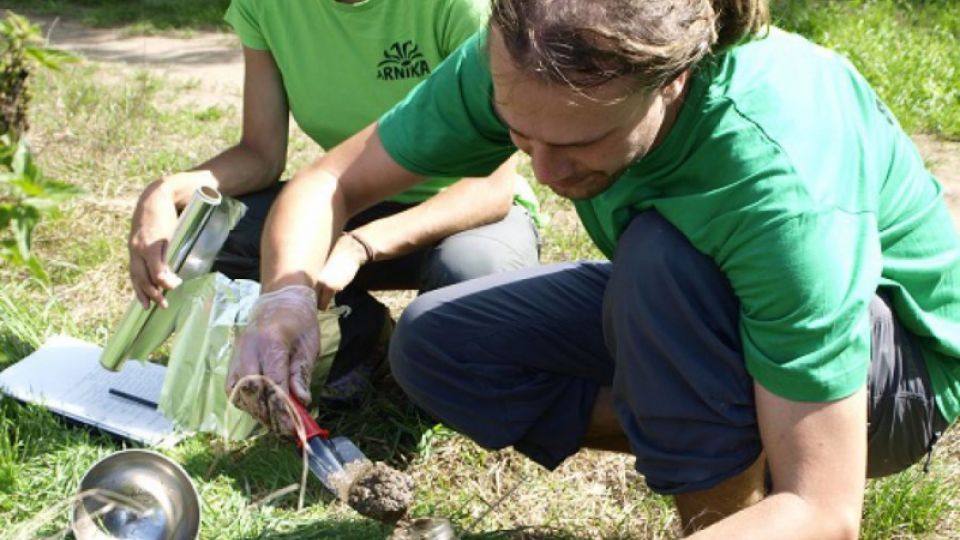Considerable amounts of substances ranking among the so-called persistent organic pollutants were found in samples of sediments from the rivers Elbe and Bílina, and from the Klíšský creek, taken by the Arnika Association's experts on toxic substances in the end of August. In humans, these substances may cause developmental defects, cancer, disruption of the endocrine system, and further serious problems. In samples from the Klíšský creek and Bílina, there were found, in particular, high levels of carcinogenic polycyclic aromatic hydrocarbons and dioxins. A possible, although not sure, source of this pollution is the chemical company Spolchemie, and contaminated sites in its premises. Concentrations of polychlorinated biphenyls (PCBs) amounting to twenty times the average values were found at the confluence of Elbe and Bílina only, and, thus, this contamination almost surely does not have its source upstream this Elbe tributary. This is proved also by the pattern of the individual PCB congeners in the taken sediment samples.
The Arnika Association published a study based on analyses of river sediment samples taken in the end of summer. In view of the fact that high concentrations of hazardous, and currently highly discussed, PCBs, were found in Elbe in July this year, a question arose concerning their origin and development of the problem.
„Although the source of the recent increase of polychlorinated biphenyl concentrations in Elbe cannot be determined for certain on the basis of our results, we may almost surely state that it could not originate from the river Bílina. This would confirm the preliminary conclusions of the Czech Environmental Inspectorate, according to which the recent occurrence of increased concentrations in Elbe was caused by river bed excavations. In this case, the high concentrations were brought about, in particular, by reckless use of PCBs in the past, and their long-term persistence in the river Elbe sediments,“ explains the study author Mgr. Václav Mach, PhD. from the Arnika Association. The PCB concentrations found out in the August samples were already lover than the July peak values. But they still reached twenty times the average levels of these substances in sediments of Czech rivers.
On the contrary, presence of the other detected toxic substances relates directly to the river Bílina, as well as the Klíšský creek, a tributary of the river. A possible source of dioxins and polycyclic aromatic hydrocarbons in the Klíšský creek is the chemical company Spolchemie, located ca 200 m upstream of the confluence of the creek and the river Bílina, where sediment samples had been taken in the end of August. However, this cannot be determined for certain on the basis of the data obtained by the measurements. „Each gram of the Klíšský creek sediment comprises the same amount of carcinogenic benzo(a)pyrene as inhaled by a smoker during smoking of approximately one cigarette packet,“ compares Václav Mach, to get a better idea.
Contaminated sites in Spolchemie and hazardous waste incinerator in Trmice could contribute to presence of polyaromatic hydrocarbons and dioxins in Bílina, too. „For example, not much attention had been paid to the problem of dioxins during decontamination of the old amalgam electrolysis plant in Spolchemie, and, similarly, in the ruins of the burned down epichlorohydrin plant. All this could contribute to the overall burden of Bílina by these substances,“ puts more precisely RNDr. Jindřich Petrlík, the head of the Toxics and Waste Programme of the Arnika Association.
PCBs and dioxins are chemically very stable substances. This means that they persist for a very long time in almost all environmental components. In view of their adverse effects on the health of humans, as well as of other organisms, the processes during which these substances are produced are regulated by the Stockholm Convention.
The purpose of our investigations was, in particular, to contribute to monitoring of pollution by persistent organic pollutants in water streams in the vicinity of the city Ústí nad Labem. The sampling and testing formed part of the project Living Water, through which the Arnika Association intends to bring public attention to importance of protection of water, and of water ecosystems. Monitoring of river pollution, as well as a nation-wide competition for elementary and secondary schools, form parts of the project, too. „Because water is completely necessary for life of everyone of us, as well as of the future generations, we want to increase the interest in water, its importance, and its quality, also in young people, by means of the competition ,“ adds Kamil Repeš, the head of the Living Water project, from the Děčín branch of the Arnika Association.
Supported by a grant from Iceland, Lichtenstein, and Norway, within the framework of the EEA.








